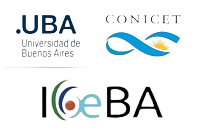Libro: The Bahía Blanca Estuary
2021

Capítulo: Taxonomic and Functional Assessment of Subtidal Macrobenthic Communities in the Bahía Blanca Estuary (Argentina)
pp 215-251
Autores: M. Emilia Bravo, M. Cecilia Carcedo, Eder P. Dos Santos, Sandra M. Fiori

Abstract: The macrobenthic communities in the soft-bottom subtidal areas of the Bahía Blanca Estuary are dominated by polychaetes, crustaceans, and mollusks. Species richness, abundance, biomass, and taxonomic and functional diversity of the macrobenthic communities vary between the myxohaline and euhaline zones. These biological descriptors of the macrobenthic communities also vary between zones located near urban and industrial effluent discharges compared to those located farther away. For the whole area studied, 155 morphospecies are listed, with dominance of the polychaetes Nicolea sp. and Leodamas verax in the myxohaline zone, Terebellides totae in the middle zone, and Axiothella sp. and the bivalve Corbula patagonica in the euhaline zone. Also, the polychaete Laeonereis acuta was dominant in the vicinity of sewage discharges. Most organisms are deposit-feeders and lack calcified bodies. There are more small-sized (<1 cm), discretely motile and burrowing organisms in the myxohaline zone than in the euhaline zone, which has more medium-sized (1–5 cm) and motile organisms. The ecological role of burrowing and deposit-feeding organisms, such as bioturbators, potentially promoting the bioavailability of contaminating substances, is highlighted throughout the chapter. There are several sources of anthropogenic disturbance, presumably acting synergistically and cumulatively. Based on the macrobenthic community, the affected areas are detected near sewage and industrial discharges. The inner area of the Bahía Blanca Estuary shows greater environmental sensitivity with the highest anthropogenic pressure.
